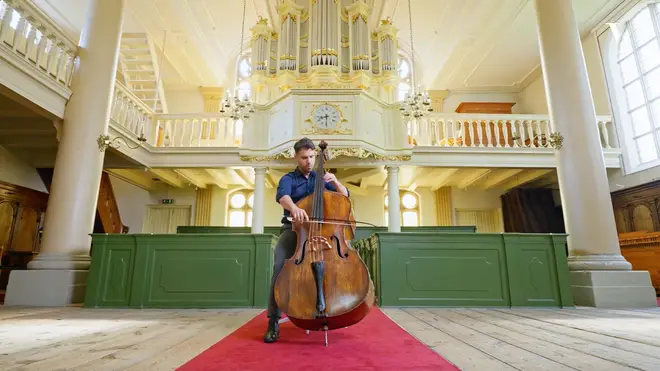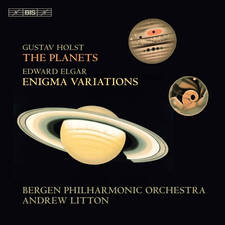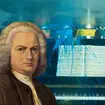Double bassist plays Bach’s Suite No.1 for solo cello – and it sounds utterly glorious
16 June 2023, 14:05 | Updated: 16 June 2023, 14:18

Double bassist plays Bach’s Suite No.1 for solo cello in a stunning Lutheran church
This musician realised that with the right bow, the Bach Cello Suite No.1 could come to life in a wonderful way on the double bass...
Since Bach composed his Cello Suites in the early 1700s, they have been transcribed for more than 20 different instruments, including the bassoon, tuba and ukulele.
But have you ever heard them played on the double bass?
Spanish double bassist Luis Cabrera has taken on a mammoth project, to record and film all six movements of the much-loved Cello Suite No.1 in G major, in a set of historically informed double bass performances.
Cabrera’s performances were recorded and filmed in February inside a strikingly beautiful 17th-century Lutheran church in Haarlem, in The Netherlands.
In the church’s stunning acoustic, Cabrera performs the Suites using a Baroque violone bow, which is much lighter than a standard double bass bow, to emulate a lighter, more authentically Baroque sound. Have a watch above.
Read more: Yo-Yo Ma plays his cello in the world’s longest cave system

For the last 17 years, Cabrera has been principal double bassist with the Netherlands Philharmonic Orchestra, and has been a professor at the Guildhall School of Music and Drama since 2012.
“The resonance of the bass is very different to that of the cello,” Cabrera told Classic FM, about his latest project. But, he added, “The timbre of the instrument in the higher register can have a more fragile and less direct colour, which I find very suitable for these suites.
“Like in all Bach’s music, you can hear all the voices talking to each other,” he added, “And in [this] exciting process, I realised they matched the bass registers so naturally!”
While preparing for his recording, Cabrera studied three manuscripts of the work – one written out by Bach’s second wife Anna Magdalena, another by the German organist and composer Johan Kellner, plus an anonymous version – and created his own unique edition.
He was also mentored throughout the research process by renowned Dutch baroque cellist Lucia Swarts, and was advised by soloist Peter Wispelwey, in order to achieve the final, historically informed performances.
Read more: Solo cellist plays Bach Prelude as rain lashes on historic temple steps

Cabrera played on a c.1815 Pietro Pallota double bass, with a bow made by Luis Emilio Rodriguez-Carrington. “I tried to play Bach with a modern bow, and although the notes are the same, the sound wasn’t right,” the musician said.
He told Classic FM: “I gradually started to experiment with different bows, from heavier to lighter. Finally I discovered that the lightest of them, made by Luis Emilio Rodriguez-Carrington in 2009 in the Hague, could really speak the music as I had it in my head and that the smallest nuance could be articulated, emphasised or expressed, and the dances could be lightly swinger and grooved.”
Cabrera’s recording is released on 17 June 2023, when it will be available to stream as an audio album. The videos have been released on both YouTube and the String Virtuoso platform, where the sheet music will also be available to download later this year.
It’s testament to Bach’s genius, and the intimacy and intrigue of his music, that so many musicians have wanted to sample these Suites for their own instrument. And testament to Cabrera, that he has treated these works with such incredible care, giving them a new lease of life in 2023.
Take a listen to the five other movements on YouTube here – the Allemande, Courante, Sarabande, Menuet and Gigue.


























